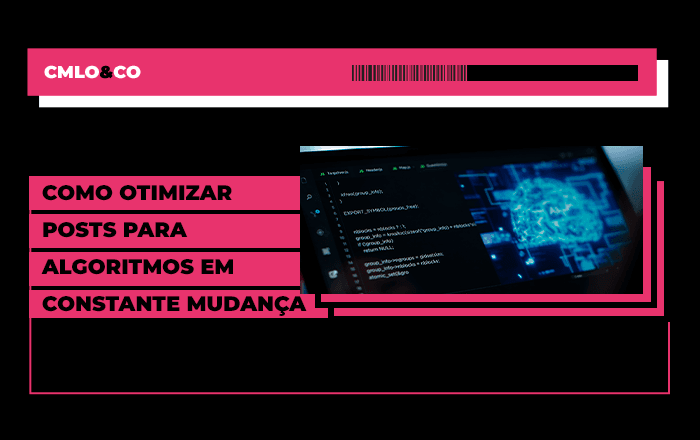In today's highly competitive digital landscape, companies are constantly looking for innovative and effective strategies to accelerate their growth. In this context Growth Hacking has emerged as a revolutionary approach, promising fast, scalable results through creative, data-driven techniques.

But what does it really mean Growth Hacking? How does it differ from traditional approaches to marketing? And, more importantly, how can companies apply this methodology to boost their growth exponentially? In this article, you'll find out the answers to these and many other questions. Follow along!
What is Growth Hacking?
Also known as growth marketing, it is a marketing approach focused on finding and exploiting opportunities for rapid and scalable growth for companies, especially startups and digital business.
Originating in Silicon Valley, this term was popularized by Sean Ellis in 2010 and quickly gained prominence in the business world.
Unlike traditional marketing strategies, which often require large investments in advertising and have a longer return on investment (ROI), the methodology focuses on creative strategies, rapid experimentation and data analysis to achieve significant results in a short period.
In short, the strategy uses a combination of creativity and analysis to identify the best tactics for driving business growth, optimizing the sales funnel, improving the user experience and increasing the customer base efficiently and cost-effectively.
Its main characteristic is to constantly look for optimization and innovation opportunities to boost the growth of a business, achieving impressive results with limited resources.
How does it work?
The Growth Hacking process involves setting clear goals, identifying potential growth channels, rapid experimentation and rigorous analysis of the results.
Growth Hackers, i.e. the professionals behind this methodology, are masters of adapting and changing course quickly, always in search of the ideal growth formula. But how exactly does this methodology work in practice?
Let's explore the main principles that guide this marketing approach:
- Fast and scalable growth: the main objective of Growth Hacking is to achieve significant growth in a short period, using strategies that can be scaled efficiently;
- Continuous experimentation: Growth Hackers are constantly testing new ideas and strategies through controlled experiments, seeking to identify the most effective tactics to drive growth;
- Data and metrics analysis: the methodology is highly data-driven. Professionals use analysis tools and metrics to monitor the performance of their strategies, identify optimization opportunities and make informed decisions;
- Focus on the growth funnel: the approach concentrates on optimizing each stage of the sales funnel, from acquiring new users to retaining and activating existing customers.
Differences between Growth Hacking and traditional marketing
Although Growth Hacking and traditional marketing share the common goal of boosting the growth and success of a business, the approaches, strategies and methods used by each of these disciplines are significantly different.
Let's take a closer look at how each of these approaches works and in which contexts they are most effective:
Focus and purpose
Growth Hacking
- Main focus: rapid and scalable growth.
- Objective: to achieve significant growth in a short period of time through innovative strategies, rapid experimentation and continuous optimization.
Traditional marketing
- Main focus: brand building and market awareness.
- Objective: to establish a solid brand presence, increase visibility and market awareness and generate long-term demand.
Approach and methodology
Growth Hacking
- Approach: guided by experimentation, data analysis and continuous optimization.
- Methodology: rapid development and testing of hypotheses, intensive use of data analysis tools and metrics to monitor performance and identify optimization opportunities.
Traditional marketing
- Approach: based on long-term strategies, branding and mass communication.
- Methodology: use of traditional marketing channels, such as print, television and radio advertising, and medium- to long-term performance metrics.
Channels and tactics
Growth Hacking
- Main channels: digital marketing, social media, SEO, e-mail marketingcontent marketing, referral and viral campaigns.
- Common tactics: A/B testing, conversion optimization, user onboarding, referral campaigns and encouraging virality.
Traditional marketing
- Main channels: print advertising, television, radio, events, public relations and direct marketing.
- Common tactics: mass advertising, public relations, sponsorships, brand events and awareness campaigns.
ROI and Investment
Growth Hacking
- ROI: high expectation of return on investment in a short period.
- Investment: generally requires a smaller investment compared to traditional marketing, focusing on low-cost, high-impact strategies.
Traditional marketing
- ROI: Return on Investment is generally slower and less measurable in the short term.
- Investment: requires significant investment in medium- to long-term marketing campaigns, including mass advertising and branding.
Flexibility and adaptability
Growth Hacking
- Flexibility: highly adaptable and experimentation-driven, allowing for quick adjustments and continuous optimization based on results and feedback.
Traditional marketing
- Flexibility: less adaptable and more rigid in terms of strategies and approaches, requiring long-term planning and execution of marketing campaigns.
In short, while traditional marketing focuses on long-term strategies, brand building and market awareness, Growth Hacking is an agile, data-driven approach focused on driving rapid, scalable business growth through experimentation, optimization and continuous innovation.
Although both approaches have their own advantages, they are complementary when applied in an integrated and strategic way to achieve the growth and success objectives of a business.
The importance of Growth Hacking for business
Growth Hacking has become an essential methodology for companies seeking rapid, scalable and sustainable growth in an increasingly competitive and digitalized market environment.
The importance of this approach for modern business can be explained by several aspects that make it an indispensable strategy for achieving and maintaining business success. Let's take a look:
Fast and scalable growth
One of the main advantages of Growth Hacking is the ability to drive significant growth in a short period of time.
Unlike traditional marketing strategies that can take months or even years to generate measurable results, growth marketing focuses on agile tactics, rapid experimentation and continuous optimization to achieve accelerated and scalable expansion.
This, in turn, allows companies to seize market opportunities quickly and gain competitive advantage effectively.

Optimization of resources and investment
The growth marketing is known for its low-cost, high-impact approach, allowing companies to optimize their resources and invest more efficiently in growth strategies.
Through rapid experimentation, data analysis and a focus on cost-effective marketing tactics, companies can maximize the return on investment (ROI) of their marketing campaigns and actions, generating significant results with a more affordable financial investment.
Focus on user experience and engagement
Growth Hacking puts the user at the center of its strategies, focusing on creating personalized, relevant and engaging experiences for the target audience.
By understanding and meeting users' needs, desires and behaviors effectively, companies can increase customer engagement, satisfaction and loyalty, which consequently leads to greater long-term customer growth and retention.
Innovation and adaptability
The approach is geared towards innovation and adaptability, encouraging companies to constantly experiment with new ideas, tactics and strategies.
This mentality of "thinking outside the box" and the search for creative and innovative solutions allows companies to remain competitive, relevant and ahead of market trends, adapting quickly to the changes and demands of the market and consumers.
Measuring and analyzing results
Growth Hacking is highly driven by data and metrics analysis, allowing companies to measure, monitor and analyze the performance of their marketing strategies and actions on an ongoing basis.
This data-driven approach provides valuable insights into user behavior, campaign effectiveness and areas of opportunity for optimization and improvement, enabling more informed decisions and more effective marketing strategies.
Best Growth Hacking strategies to boost business growth
Now that you understand the importance of Growth Hacking for business, let's explore some of the best strategies for boosting your company's exponential growth.
- SEO (Search Engine Optimization)optimizing content and site structure to improve search engine rankings and attract organic traffic;
- Content marketing: creating relevant and valuable content to attract and engage the target audience, positioning the brand as an authority in the market;
- Viral marketing and referral campaigns: creating incentives for users to share products, services or content with their network of contacts, expanding the brand's reach organically.
- Onboarding and user retention: developing strategies to improve the user experience from the first contact with the brand, increasing retention and loyalty rates.
5 tips for applying Growth Hacking in your company
Applying Growth Hacking to your company requires in-depth knowledge of the market and the best marketing strategies for your type of business. Below, we've listed some universal tips so that you can apply the methodology successfully in your company:
- Know your target audience: carry out market research and data analysis to understand the needs, behaviors and preferences of your target audience. This will allow you to create more effective and targeted strategies.
- Set clear and measurable goals: set specific and measurable goals for your growth marketing strategies, such as increasing website traffic by 50% or increasing the conversion rate by 20%.
- Foster a culture of experimentation: encourage your team to constantly test new ideas and strategies, learning from successes and failures to continually optimize their approaches.
- Use automation and analysis tools: implement marketing automation and data analysis tools to monitor the performance of your Growth Hacking strategies and identify optimization opportunities.
- Constantly measure and adjust: regularly analyze the results of your strategies, adjusting and optimizing your approaches based on the data collected to maximize ROI.
Conclusion
As we've seen in this article, Growth Hacking is a powerful and indispensable methodology for companies seeking rapid and scalable growth in the digital world.
By applying the above strategies effectively, companies can optimize their resources, increase their customer base and achieve significant results in a short period of time.
CMLO&CO, marketing and advertising agencyis the ideal partner to help your company leverage its business through Growth Hacking.
With a highly qualified team experienced in growth strategies, we can help you identify the best growth opportunities, implement the best practices and achieve exceptional results. Talk to our marketing and advertising experts.







